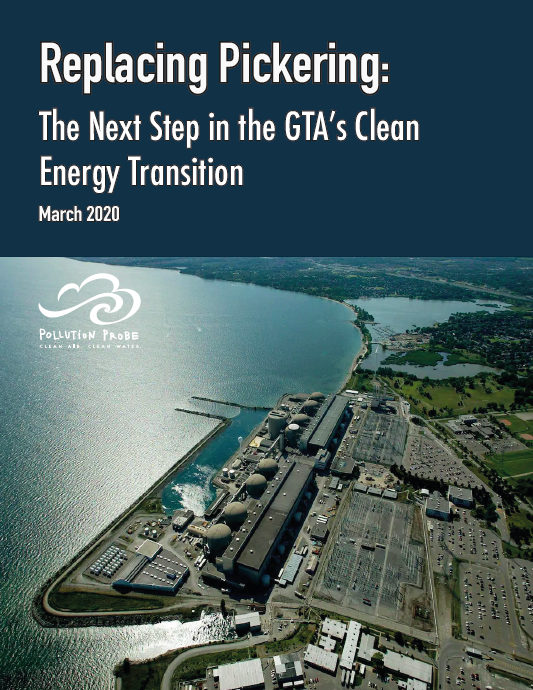Replacing Pickering
Pickering nuclear plant has been the subject of intense discussion and debate in recent months, not least with regard to the possibility of extending its lifespan. Amid all the talks of pros, cons and safety concerns, the one thing that has not been talked about is this: when Pickering does eventually shut down, what do we do to replace it?
The question is a pertinent one particularly because Pickering has been providing climate friendly electricity to Ontario (especially to the Greater Toronto Area) for almost half a century. After it shuts down, the default response will be to increase electricity generation from natural gas – which would more than double climate change emissions from the electricity sector.
Ontario is justifiably proud of its low-emission power, with around 95% coming from clean sources, a fact celebrated in the government’s environment plan. Pickering’s closure has been decided, but no plan has been developed to replace it with non-emitting electricity sources. If Ontario is to retain its hard-won clean grid, it is vital to explore options for non-emitting solutions that can be deployed by 2025 to replace Pickering’s supply.
Given that much of Pickering’s electricity is used in the GTA, and that many municipalities have ambitious emissions-reduction targets, GTA residents, governments and businesses need to consider what they can do by 2025 to help preserve our low-emissions electricity system.
Using results from a literature review and a multi-stakeholder workshop with major utilities, government, industry and civil society, Pollution Probe’s report shows that filling the gap with non-emitting options by when Pickering closes in 2025 is an ambitious goal, but it is achievable. What we heard was that increasing energy efficiency and developing small scale clean electricity solutions could fill the gap.
Reducing demand will be key. Ontario has improved energy efficiency over the years, helping reduce consumer bills and the need for new electricity, and this should continue. But we need to target energy efficiency where it can provide the greatest value, like specific areas of the grid where reducing demand could avoid the need for new utility infrastructure, or during times of high demand (e.g., mid-summer) when the alternative would be to burn more natural gas.
Conservation alone will not be enough. Renewable energy has had bad press in Ontario due to high costs, but the market has shifted to make renewables, provided that they are developed in a way that provides value to the grid, now often the lowest-cost option.
Developing these solutions provides benefits beyond reducing emissions – including building resiliency to extreme weather and allowing for local economic development. There is an opportunity to keep our electricity clean while also saving consumers money. To get there, Ontario’s energy policy, market and regulatory systems need to be updated. In the short-term, electric vehicle owners can benefit by shifting charging to low-demand hours. Utilities should properly consider the cost and benefits of conservation and small clean energy systems and compensate appropriately for all the value they can add.
“We have solutions to help Ontario retain its clean power supply, which is important for all Ontarians, not just those in the GTA,” says Richard Carlson, Director of Energy at Pollution Probe. “However, for an effective transition, political commitment to supporting these goals is needed.”
The project was supported by funding from The Atmospheric Fund.

